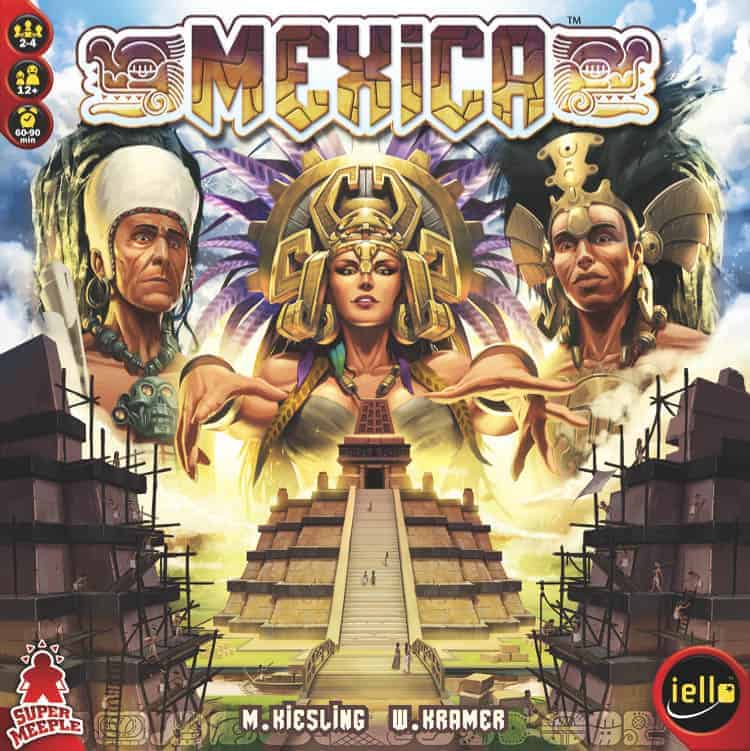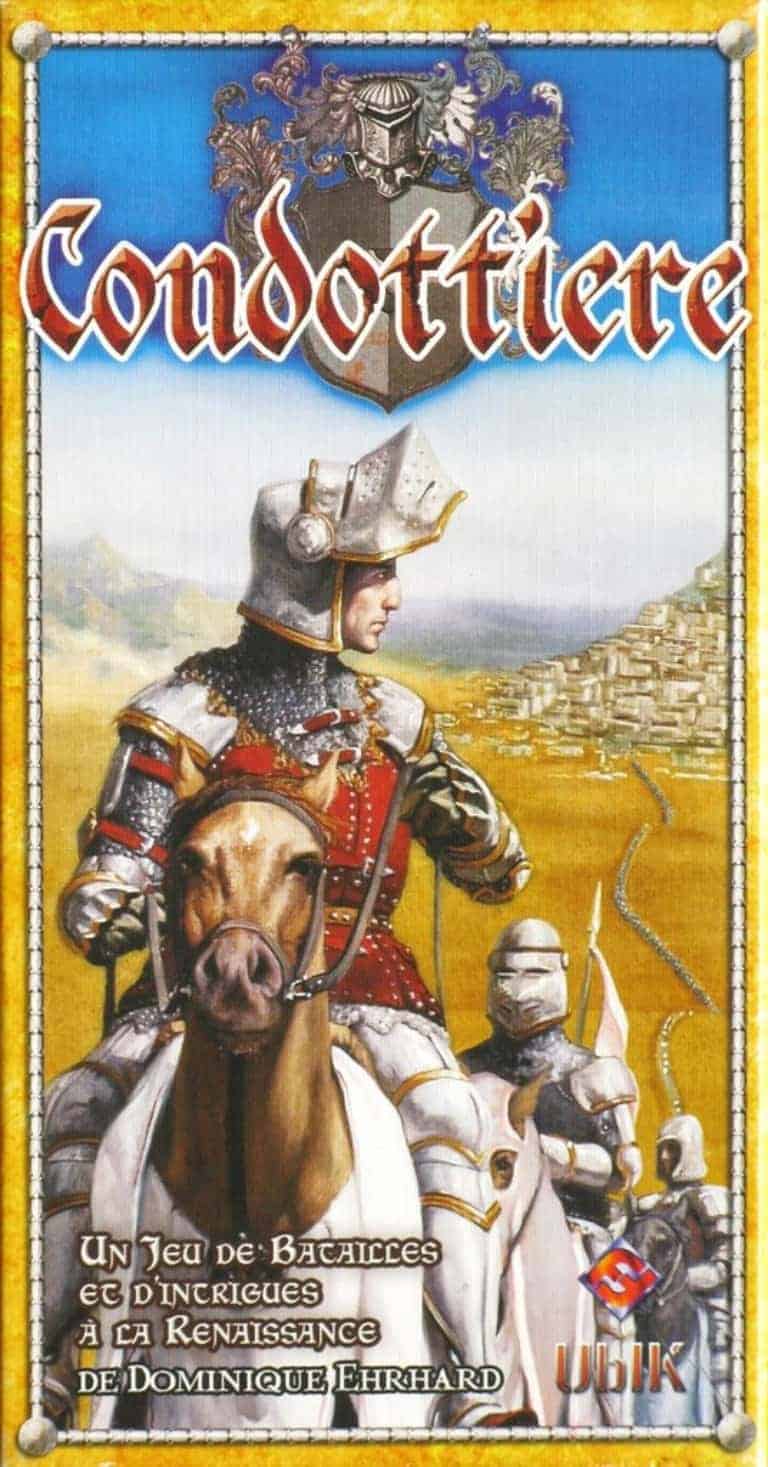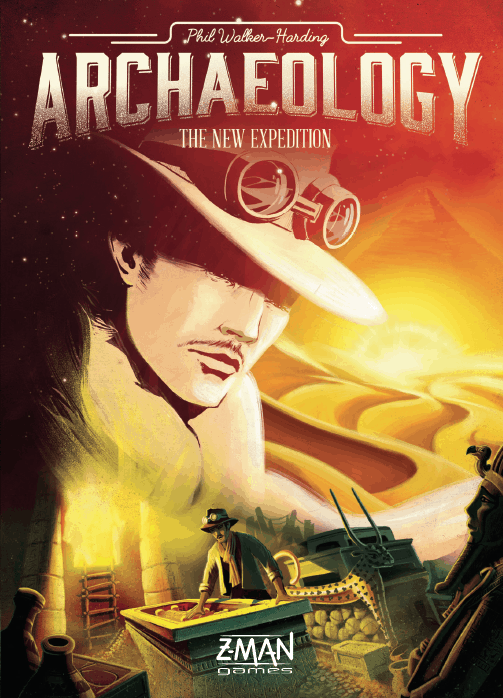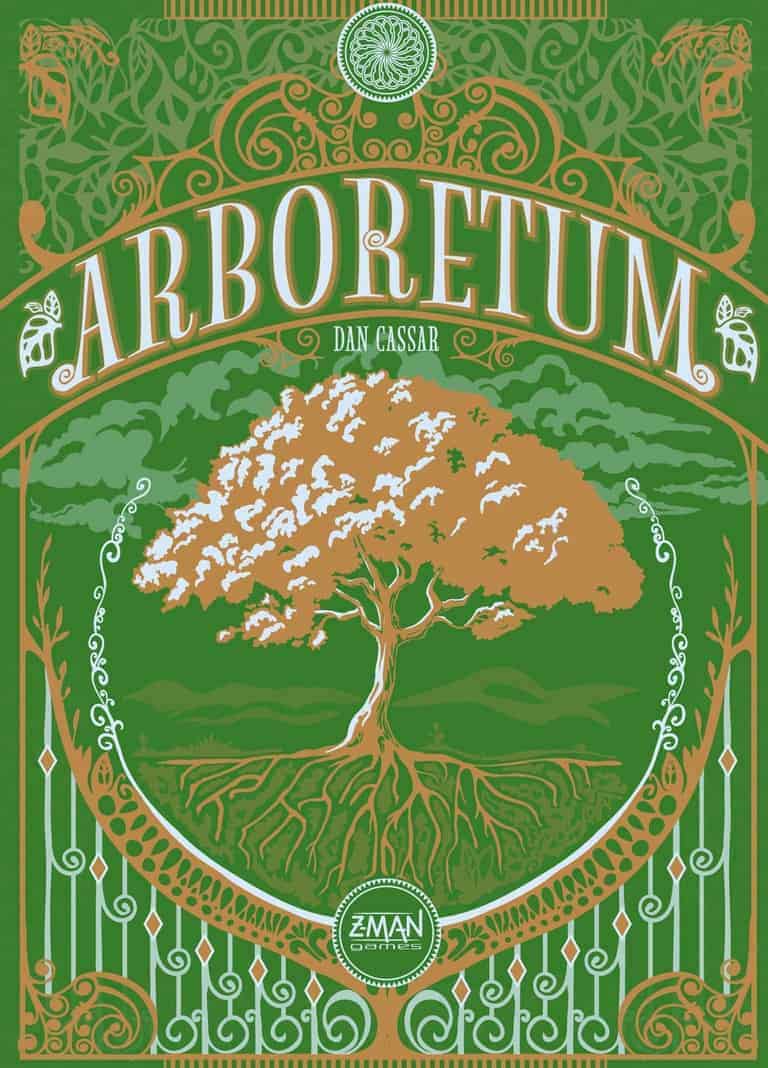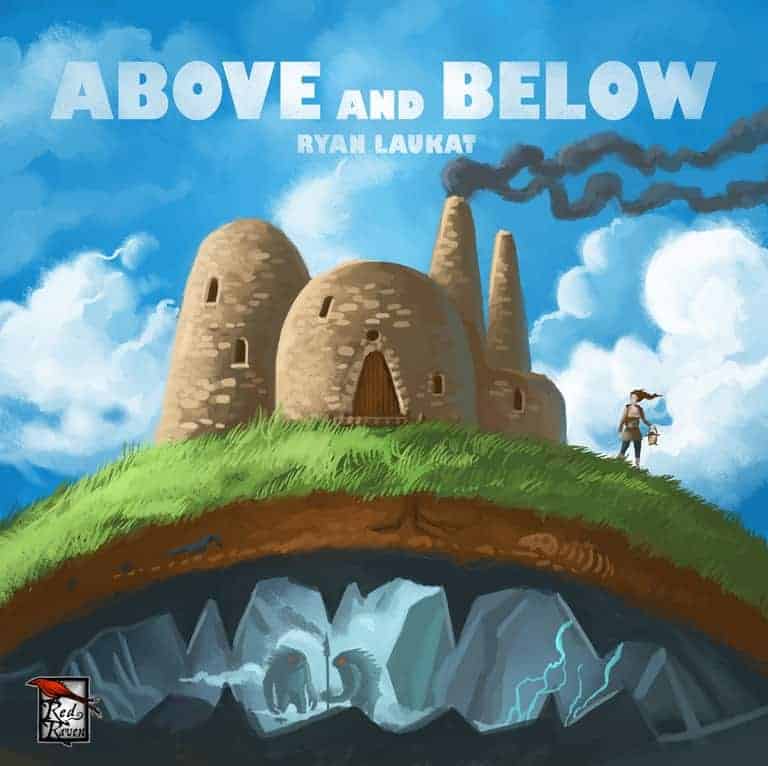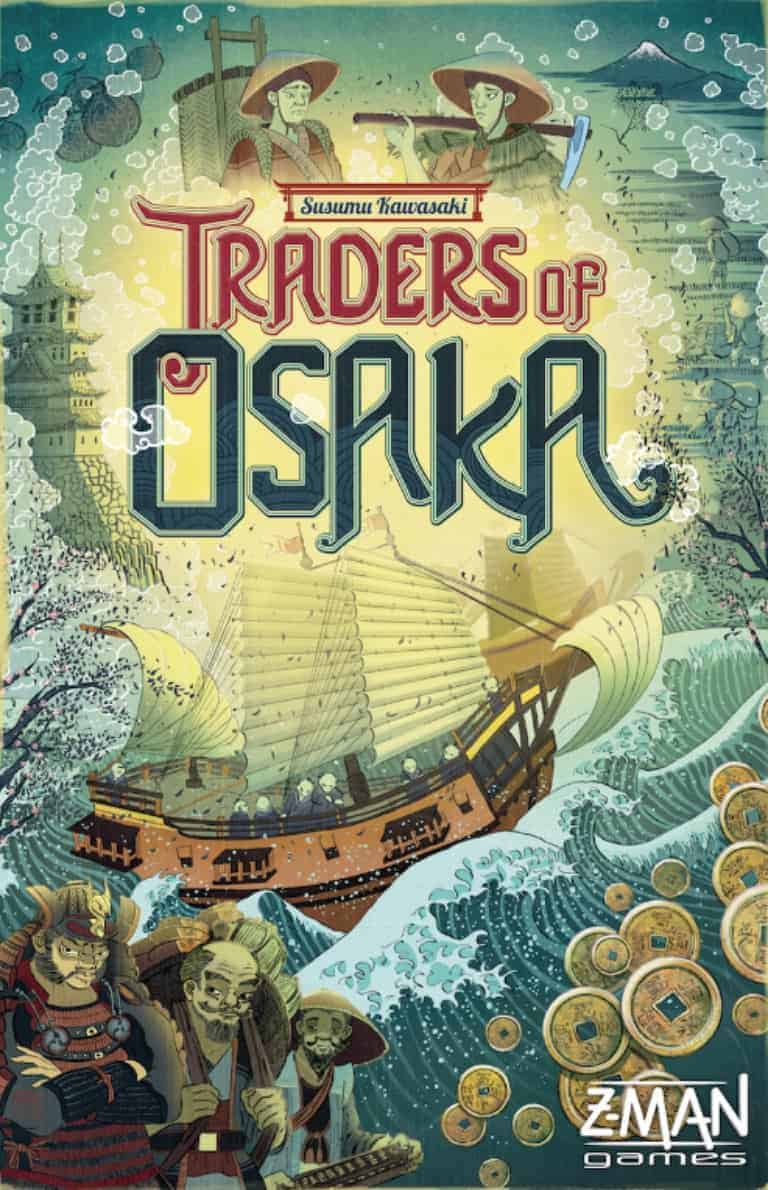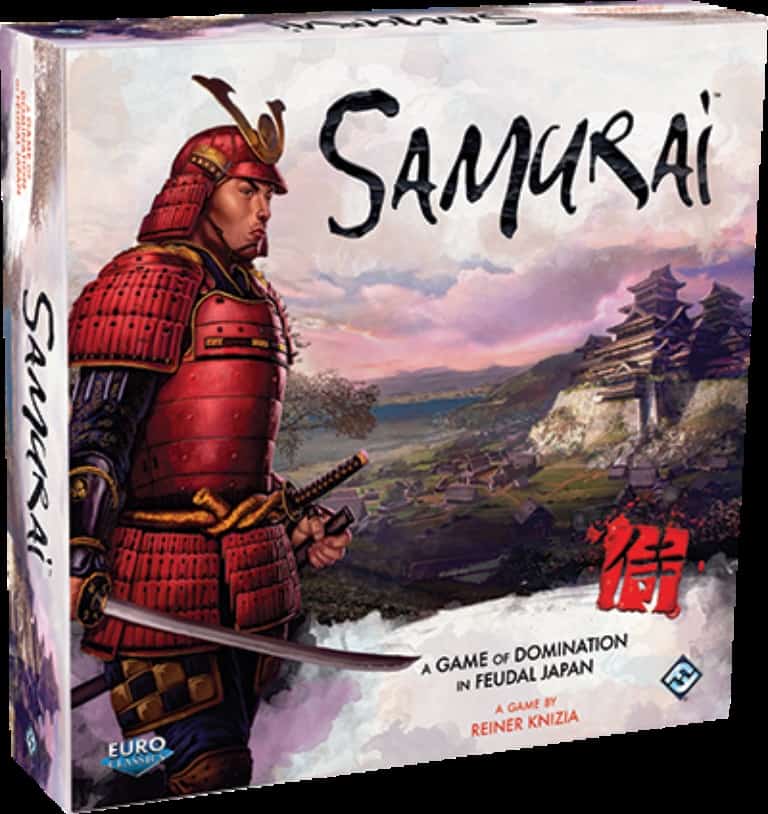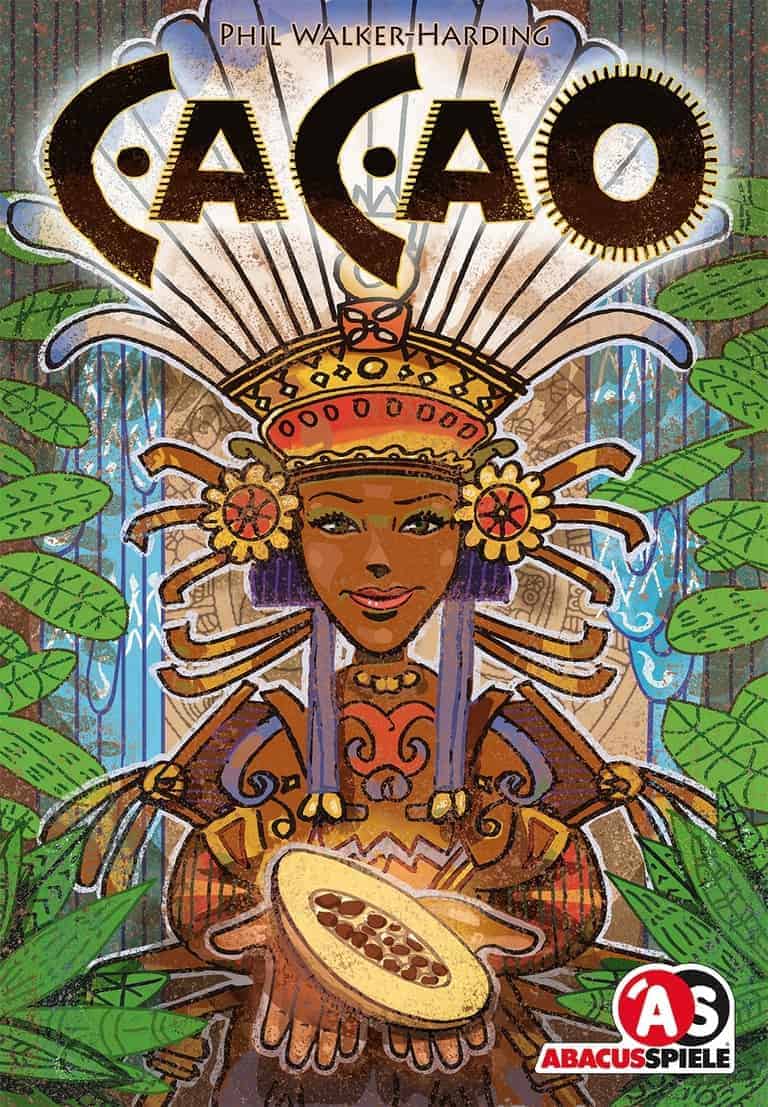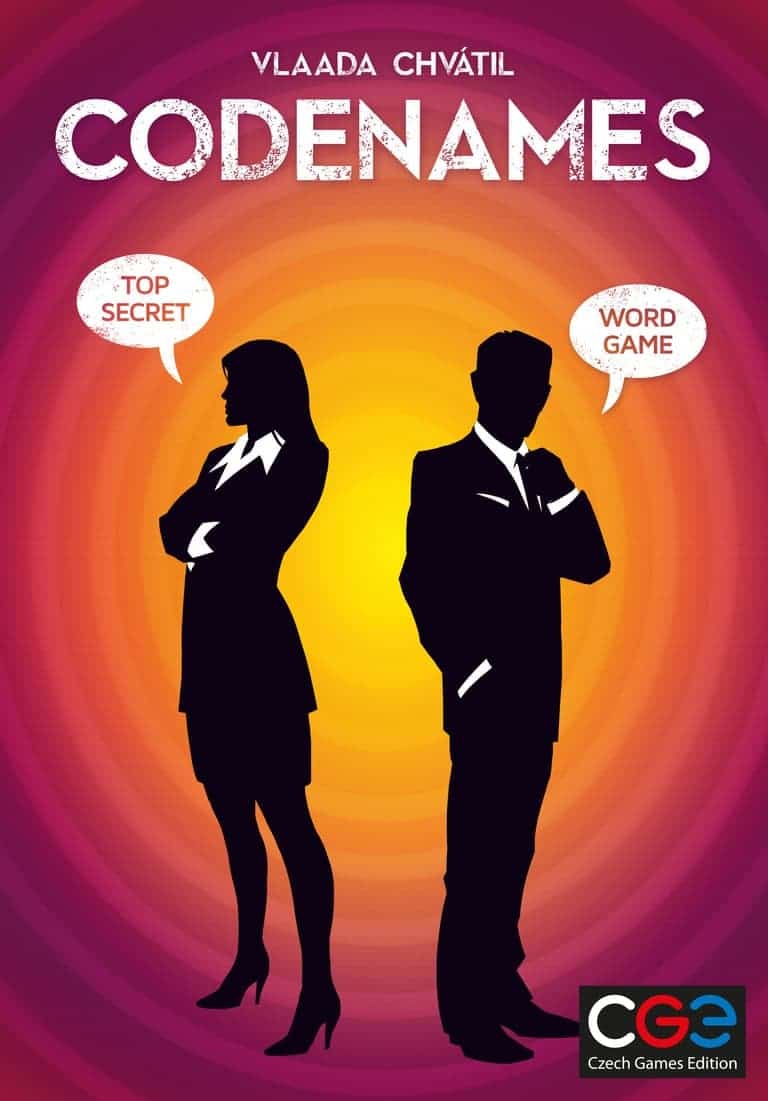Games Category: New to Games?
Mexica
Mexica plots the development of the city of the same name on an island in lake Texcoco. Players attempt to partition it into districts, place buildings, and construct canals.
Districts are formed by completely surrounding areas of the island with water and then placing a District marker. The player who founds a district scores points immediately.
Canals and Lake Texcoco act as a quick method of moving throughout the city. Players erect bridges and move from one bridge to the next, which costs 1 action point regardless of the distance. They must also erect buildings. This costs action points, the exact number being dependent upon the building’s size.
In the scoring phases of the game, players score points (El Grande style) based upon their dominance in a District. In the 4 player game, players with the 1st, 2nd, and 3rd most buildings score decreasing numbers of points.
Only districts are scored in the first scoring round.
In the second scoring round at the end of the game, all land areas are scored, not just districts.
The player with the most points wins.
Read MoreCondottiere
“None of the principal states were armed with their own proper forces. Thus the arms of Italy were either in the hands of the lesser princes, or of men who possessed no state; for the minor princes did not adopt the practice of arms from any desire of glory, but for the acquisition of either property or safety. The others (those who possessed no state) being bred to arms from their infancy, were acquainted with no other art, and pursued war for emolument, or to confer honor upon themselves.” –Niccolò Machiavelli, History of Florence Book I, Chapter VII
It is 13th century Italy. Trade flourishes between the city-states and the Levant. Venice, Florence, and Genoa are bursting with wealth. However, each city-state is also plagued with a weak national army, leaving them defenseless against invasion from their envious neighbors. Enter the Condottiere.
Read MoreArchaeology: The New Expedition
You are an archaeologist working the dig sites of the Egyptian desert. Search for the right pieces to complete torn parchments, broken pots, and other priceless artifacts. Explore an ancient pyramid in the hope of uncovering a huge stash of treasure! Trade shrewdly at the local marketplace to increase the value of your collection. Sell your treasures to the museum at just the right time for maximum profit.
But beware, the desert also has its dangers! A devastating sandstorm can throw your expedition into disarray, and cunning thieves lurk around the dig site ready to steal your prize discovery!
Read MoreAbove and Below
Your last village was ransacked by barbarians. You barely had time to pick up the baby and your favorite fishing pole before they started the burning and pillaging. You wandered over a cruel desert, braved frozen peaks, and even paddled a log across a rough sea, kicking at the sharks whenever they got too close, the baby strapped tightly to your back.
Then you found it! The perfect place to make your new home. But as soon as you had the first hut built, you discovered a vast network of caverns underground, brimming with shiny treasures, rare resources, and untold adventure. How could you limit your new village to the surface? You immediately start organizing expeditions and building houses underground as well as on the surface.
With any luck, you’ll build a village even stronger than your last– strong enough, even, to turn away the barbarians the next time they come knocking.
Above and Below is a mashup of town-building and storytelling where you and up to three friends compete to build the best village above and below ground. In the game, you send your villagers to perform jobs like exploring the cave, harvesting resources, and constructing houses. Each villager has unique skills and abilities, and you must decide how to best use them. You have your own personal village board, and you slide the villagers on this board to various areas to indicate that they’ve been given jobs to do. Will you send Hanna along on the expedition to the cave? Or should she instead spend her time teaching important skills to one of the young villagers?
A great cavern lies below the surface, ready for you to explore– this is where the storytelling comes in. When you send a group of villagers to explore the depths, one of your friends reads what happens to you from a book of paragraphs. You’ll be given a choice of how to react, and a lot will depend on which villagers you brought on the expedition, and who you’re willing to sacrifice to succeed. The book of paragraphs is packed with encounters of amazing adventure, randomly chosen each time you visit the cavern.
At the end of the game, the player with the most well-developed village wins!
Read MoreTraders of Osaka
In charge of valuable cargo, you must deliver it from Osaka to Edo. But fierce competition and the Black Tide may sink your hopes for fortune! Set sail for Japan in this exciting game for traders full of opportunities… and opportunists!
A compact game that plays fast with impactful choices every turn.
Buy, take coins, or reserve a card: no matter the choice, it will always affect your opponents’ turns.
Read MoreSamurai
Samurai is a much-beloved tile-placement game for two to four players by renowned designer Reiner Knizia. You and your opponents assume the roles of ambitious daimyo, vying for dominance in feudal Japan.
Through the strategic placement of tiles, you establish your sway over lesser lords, the production of rice, and the region’s religious leaders. Sometimes, though, even these won’t be enough to establish your dominance, and to cement your position, you must send in your samurai!
Read MoreCodenames
In Codenames, two teams face a square grid of 25 word cards. Each team has a captain, and both captains can see (via a hidden picture) which cards belong to their team, which cards are neutral, and which single card is the “assassin”.
On a turn, the captain gives their teammates a clue such as “Car 4”. Those teammates then select cards (up to the number given) which they think the captain might have in mind for the clue (perhaps “Wheel”, “Electric”, “Vacation” and “Price”). Choosing a word not belonging to your team ends the turn, and choosing the “assassin” word makes you lose immediately. Assuming neither team falls to the assassin, the winner is the first team to uncover all of their own words.
Read More

